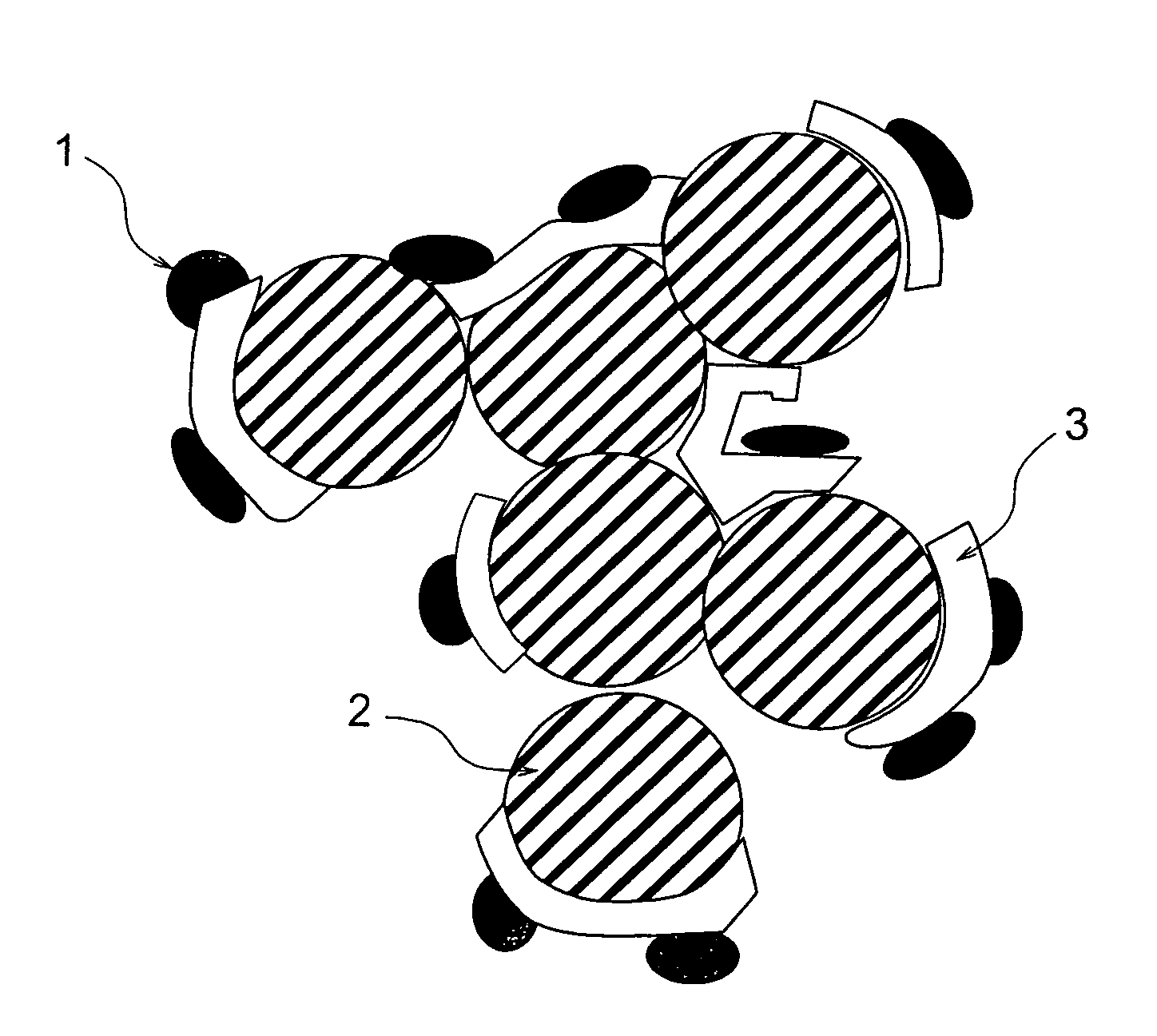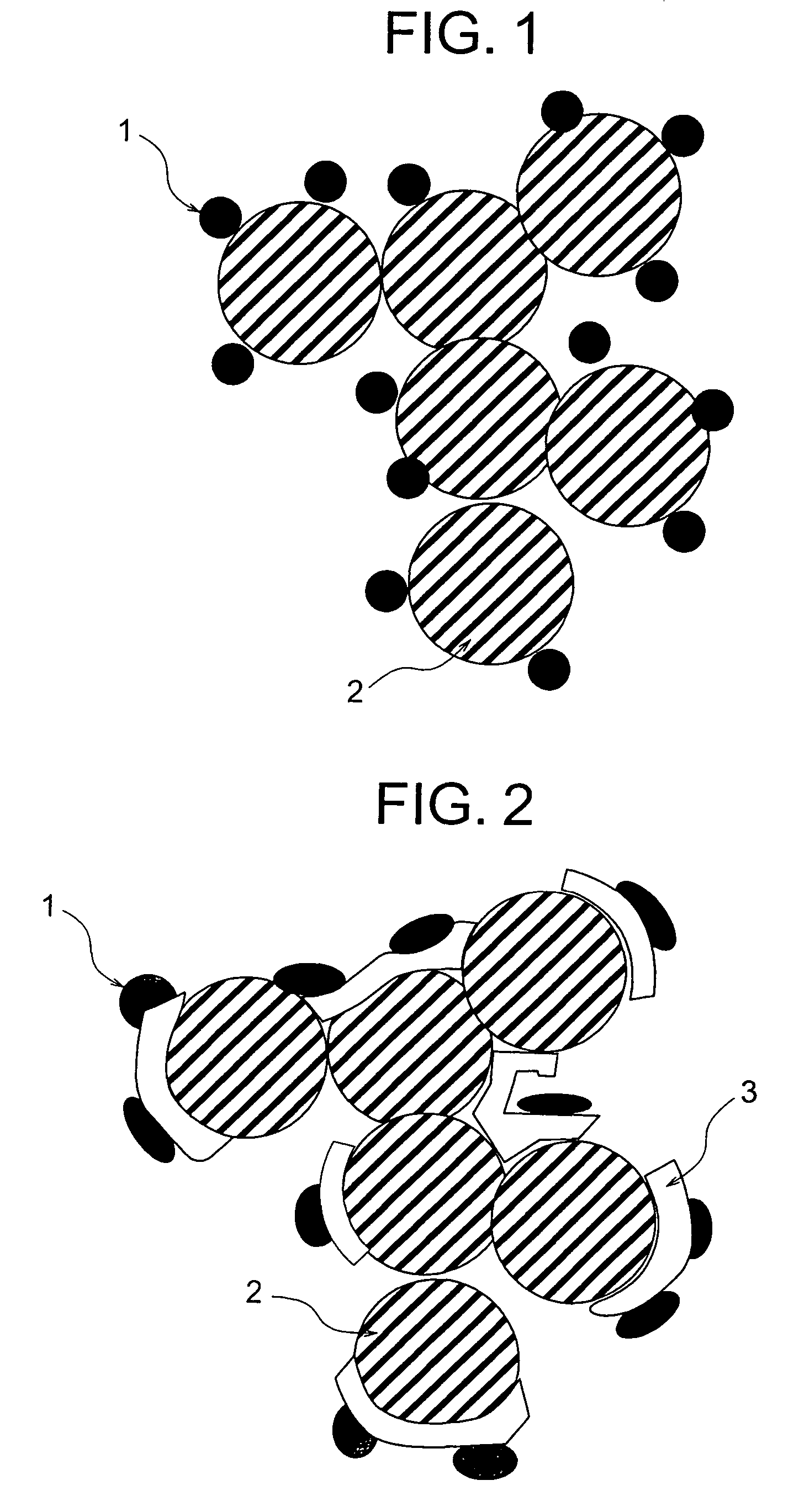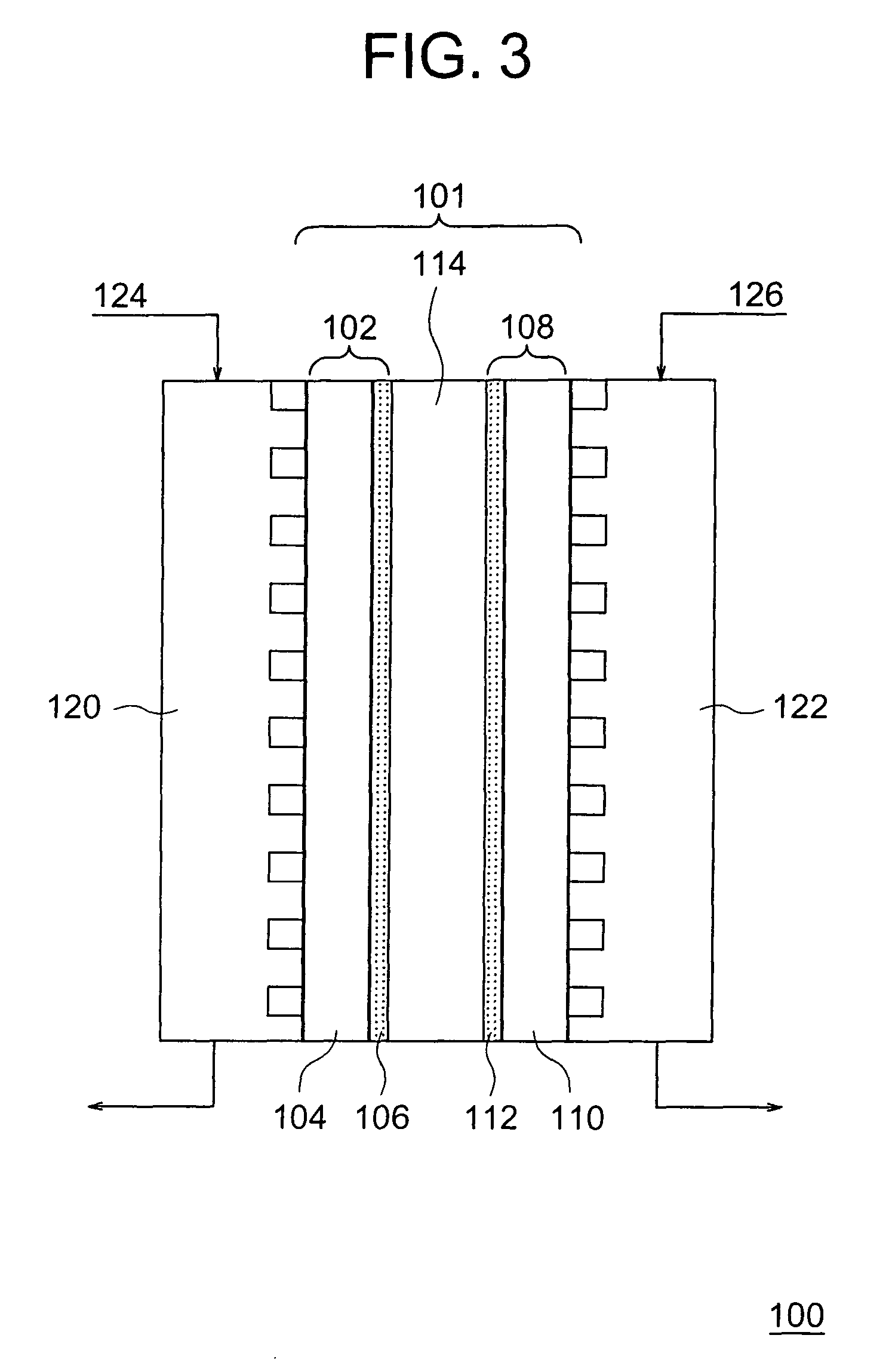Catalyst-supporting particle, composite electrolyte, catalyst electrode for fuel cell, and fuel cell using the same, and methods for fabricating these
a fuel cell and catalyst electrode technology, applied in the field of catalyst electrodes for fuel cells and fuel cells, can solve the problems of limiting the output power of the fuel cell, reducing the efficiency of the cell, and loss of fuel not reacted in the fuel electrode, so as to achieve the effect of suppressing the output power reduction, reducing the output power, and increasing the output power
- Summary
- Abstract
- Description
- Claims
- Application Information
AI Technical Summary
Benefits of technology
Problems solved by technology
Method used
Image
Examples
example 1
[0091]The preparation and the evaluation of catalyst-supporting particle having a carbon particle, a catalyst substance and an adhesive layer sandwiched between the carbon particle and the catalyst substance were conducted in accordance with the following methods.
[0092]Ketjen black (available from Lion Corporation) was used as the carbon particle for supporting the catalyst. An aqueous solution was prepared by dissolving 1 g of titanium tetrachloride into 1 liter of pure water. After the aqueous solution was cooled with ice water and 10 g of the ketjen black was added and agitated, the titanium was adsorbed on the ketjen black surface. After the filtrations of the carbon particles supporting the titanium and the washings were repeated several times, a metal titanium layer was formed on the carbon particle surface by placing the particles in an argon atmosphere and heating to 500° C. The observation of the carbon particles at this stage with a transmission electron microscope (TEM) c...
example 2
[0100]The preparation and the evaluation of catalyst-supporting particle having a carbon particle, a catalyst substance and an adhesive layer sandwiched between the carbon particle and the catalyst substance were conducted in accordance with the following methods.
[0101]Acetylene black (available from Denki Kagaku Kogyo K.K.) was used as the carbon particle for supporting the catalyst. An aqueous solution was prepared by dissolving 1 g of zirconium tetrachloride into 1 liter of pure water. After the aqueous solution was cooled with ice water and 10 g of the acetylene black was added and agitated, the zirconium was adsorbed on the acetylene black surface. After the filtrations of the carbon particles supporting the zirconium and the washings were repeated several times, a metal zirconium layer was formed on the carbon particle surface by placing the particles in a helium atmosphere and heating to 500° C. The observation of the carbon particles at this stage with the TEM confirmed the ...
example 3
[0108]Catalyst electrodes and fuel cells were fabricated by using the two kinds of the catalyst-supporting carbon particles prepared in Example 1 and the catalyst-supporting carbon particle prepared in Example 2.
[0109]A colloidal dispersion liquid of a polymer electrolyte was prepared by mixing a solid polymer electrolyte which was an alcohol solution containing 5% Nafion available from Aldrich Chemical Co. with n-butyl acetate such that an amount of the solid polymer electrolyte was adjusted to be 0.1 to 0.4 mg / cm2, followed by agitation. Then, each 500 g of the above three kinds of the carbon particles supporting the platinum catalysts was added to 80 ml of the colloidal dispersion liquids of the polymer electrolytes prepared above to adsorb the colloids on the carbon particle surfaces. These dispersion liquids were made to be pastes by using a supersonic wave dispersion apparatus.
[0110]After the obtained pastes were applied on carbon papers (available from Toray Industries, Inc.)...
PUM
| Property | Measurement | Unit |
|---|---|---|
| particle diameter | aaaaa | aaaaa |
| radius | aaaaa | aaaaa |
| atomic radius | aaaaa | aaaaa |
Abstract
Description
Claims
Application Information
 Login to View More
Login to View More - R&D
- Intellectual Property
- Life Sciences
- Materials
- Tech Scout
- Unparalleled Data Quality
- Higher Quality Content
- 60% Fewer Hallucinations
Browse by: Latest US Patents, China's latest patents, Technical Efficacy Thesaurus, Application Domain, Technology Topic, Popular Technical Reports.
© 2025 PatSnap. All rights reserved.Legal|Privacy policy|Modern Slavery Act Transparency Statement|Sitemap|About US| Contact US: help@patsnap.com



